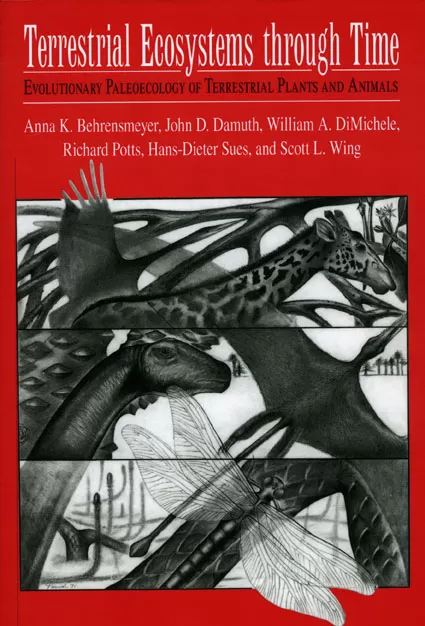
Search
ETE News and Publications
News
The 30th Anniversary of the Evolution of Terrestrial Ecosystems (ETE) Program
Public Program: Survivors - What Fossils Tell Us about the Past and Future
On the evening of March 30th, the ETE Program held a public event in Q?rius to mark its 30th anniversary of research, education, and outreach about terrestrial ecosystems through geological time.
This event was included in the “After Hours” and “Anthropocene: Life in the Age of Humans” discussion series at NMNH, but pioneered a new format, with a series of talks combined with hands-on activities. ETE co-directors Kay Behrensmeyer and Kate Lyons, along with ETE post-doctoral fellow Silvia Pineda-Munoz, collaborated with the NMNH Office of Education and Outreach and the staff and volunteers of Q?rius to plan and produce the evening program.
Publications
The ETE Book
Terrestrial Ecosystems Through Time: Evolutionary Paleoecology of Terrestrial Plants and Animals
Anna K. Behrensmeyer, John D. Damuth, William A. DiMichele, Richard Potts, Hans-Dieter Sues, and Scott L. Wing

Breathtaking in scope, this is the first survey of the entire ecological history of life on land—from the earliest traces of terrestrial organisms over 400 million years ago to the beginning of human agriculture. By providing myriad insights into the unique ecological information contained in the fossil record, it establishes a new and ambitious basis for the study of evolutionary paleoecology of land ecosystems.
A joint undertaking of the Evolution of Terrestrial Ecosystems Consortium at the National Museum of Natural History, Smithsonian Institution, and twenty-six additional researchers, this book begins with four chapters that lay out the theoretical background and methodology of the science of evolutionary paleoecology. Included are a comprehensive review of the taphonomy and paleoenvironmental settings of fossil deposits as well as guidelines for developing ecological characterizations of extinct organisms and the communities in which they lived. The remaining three chapters treat the history of terrestrial ecosystems through geological time, emphasizing how ecological interactions have changed, the rate and tempo of ecosystem change, the role of exogenous "forcing factors" in generating ecological change, and the effect of ecological factors on the evolution of biological diversity.